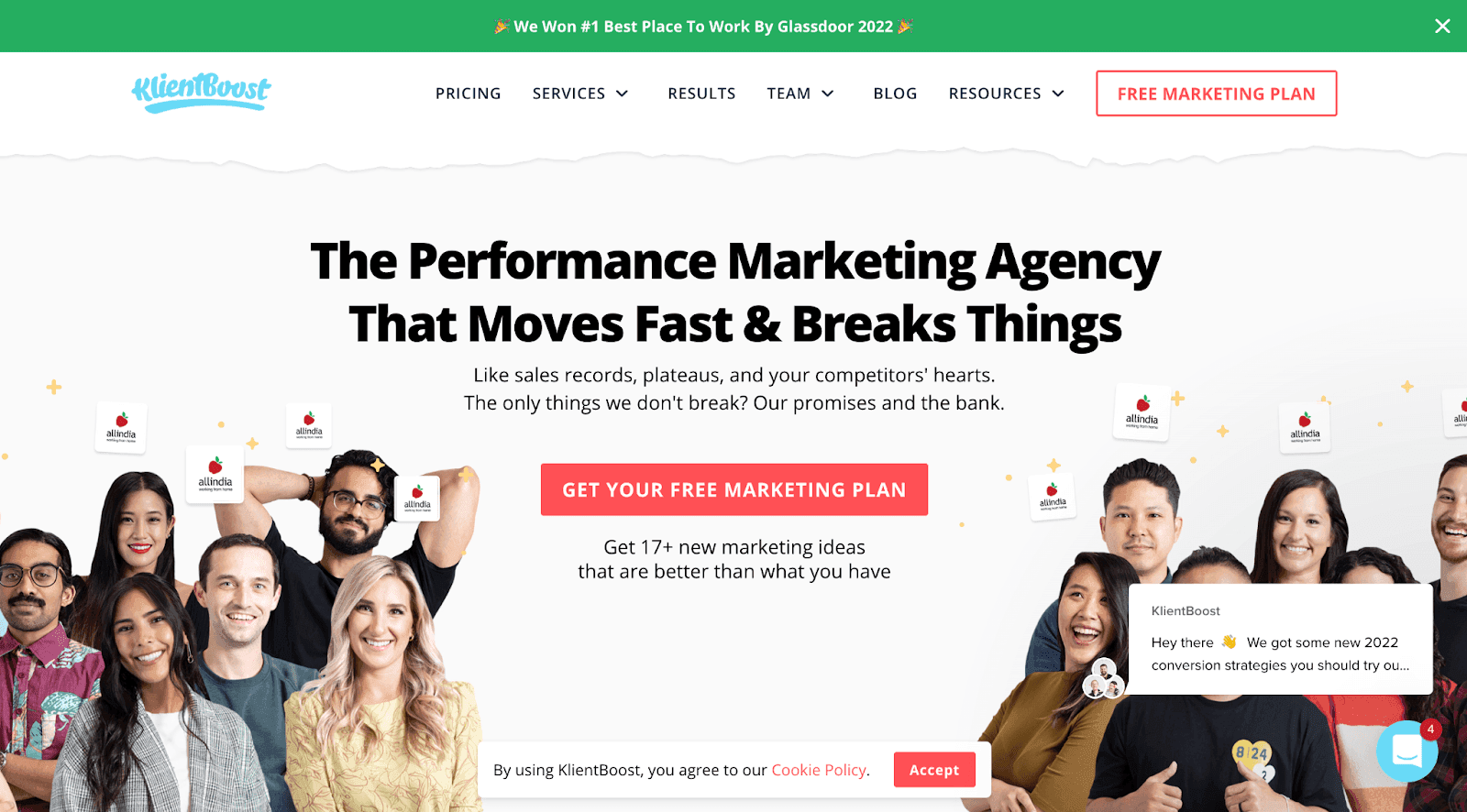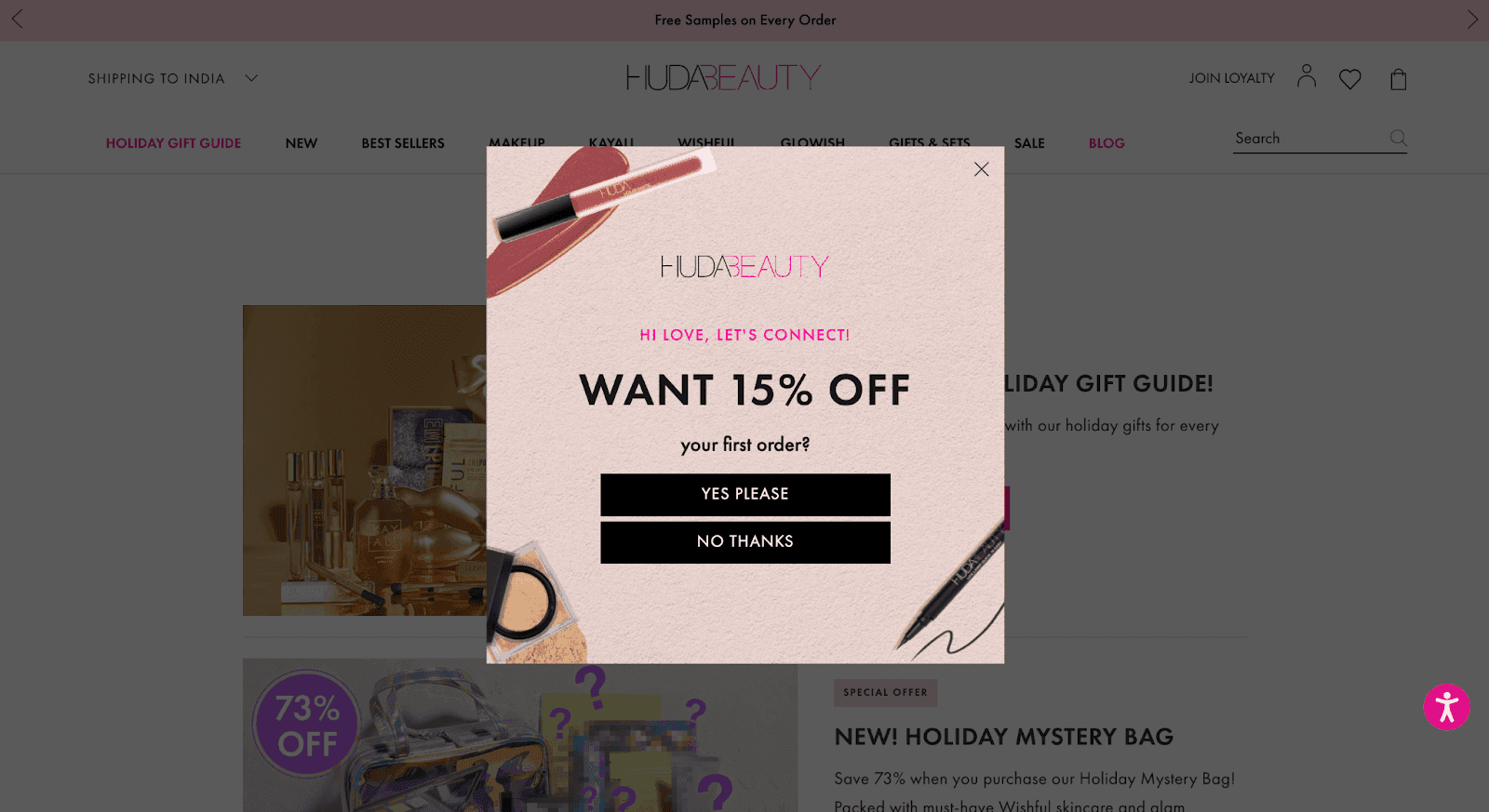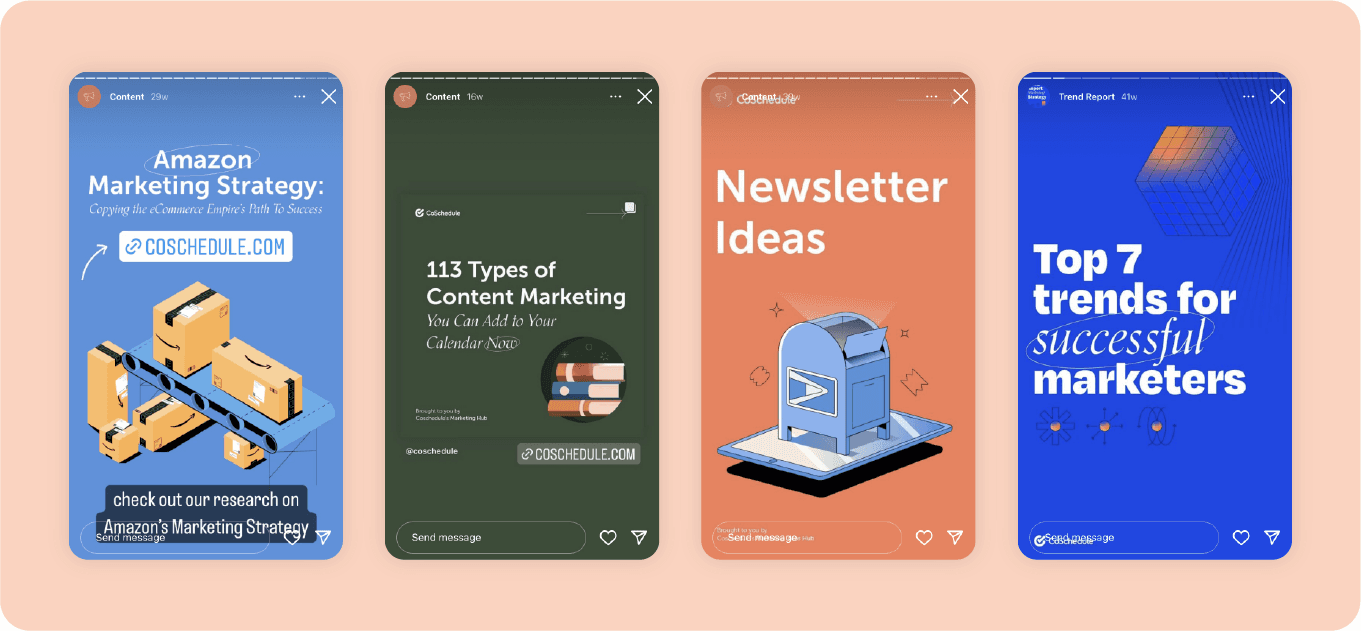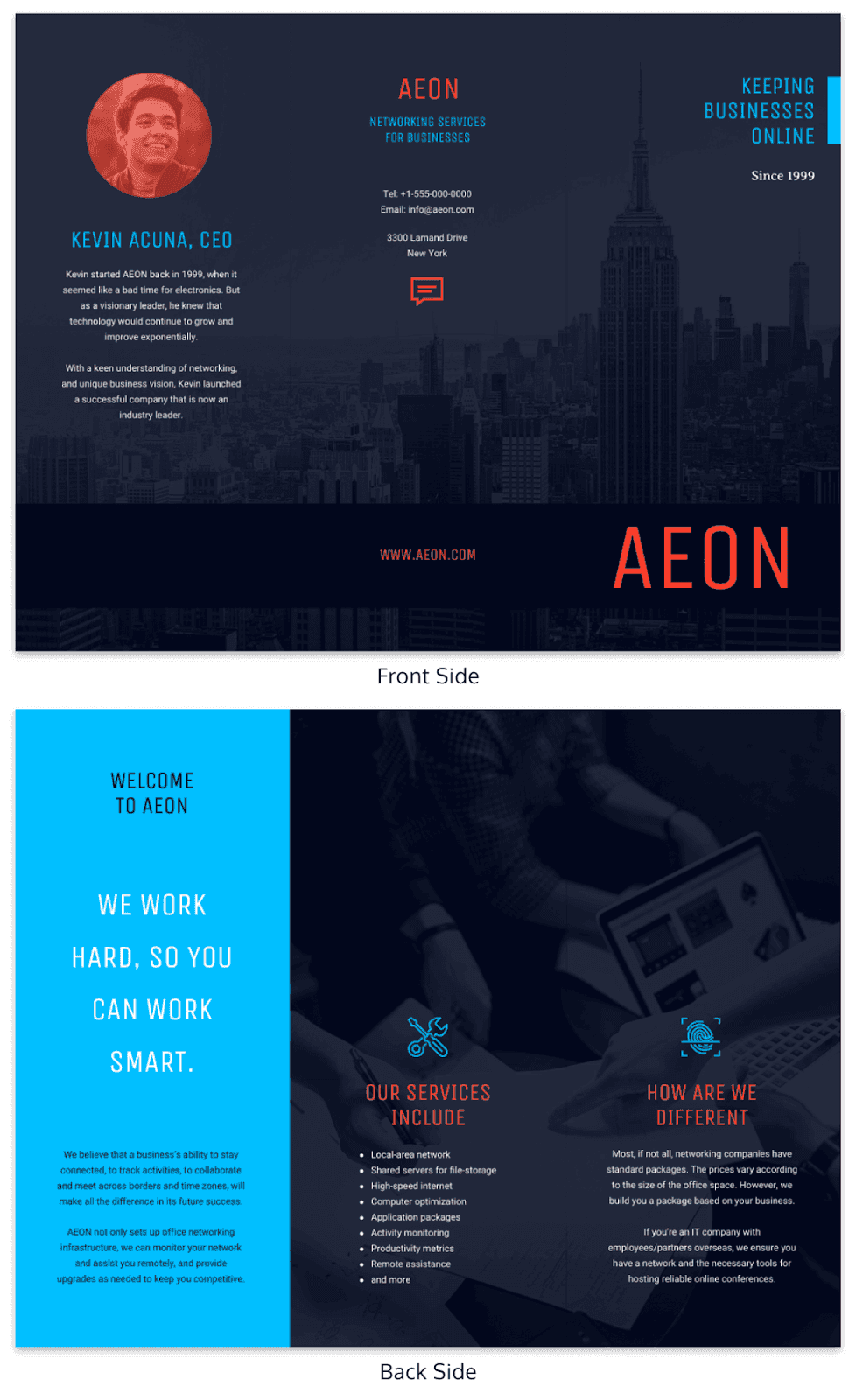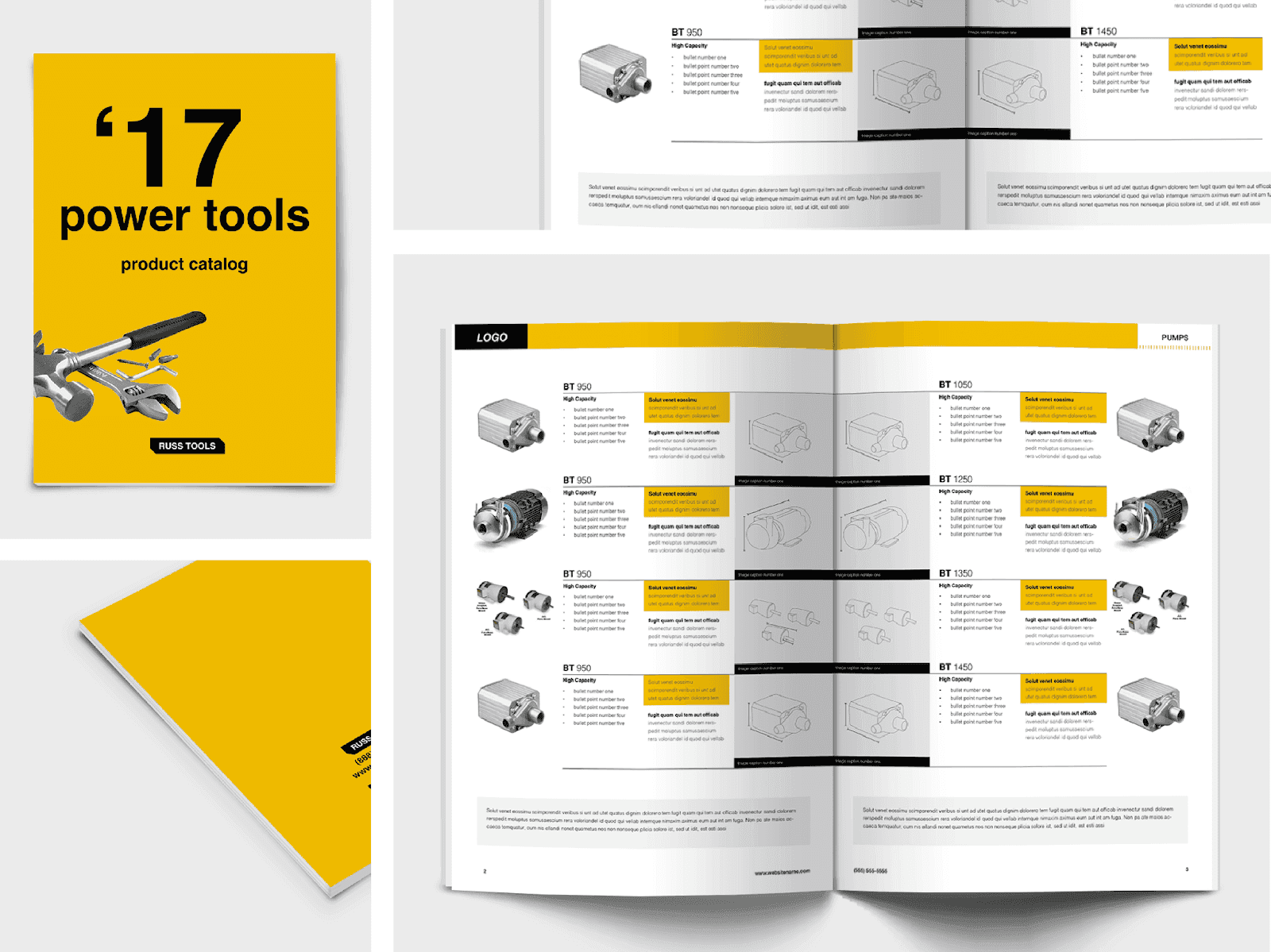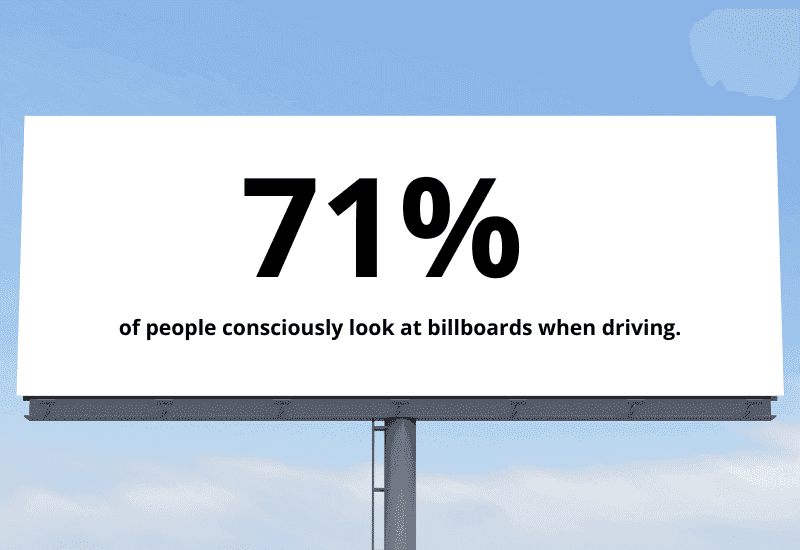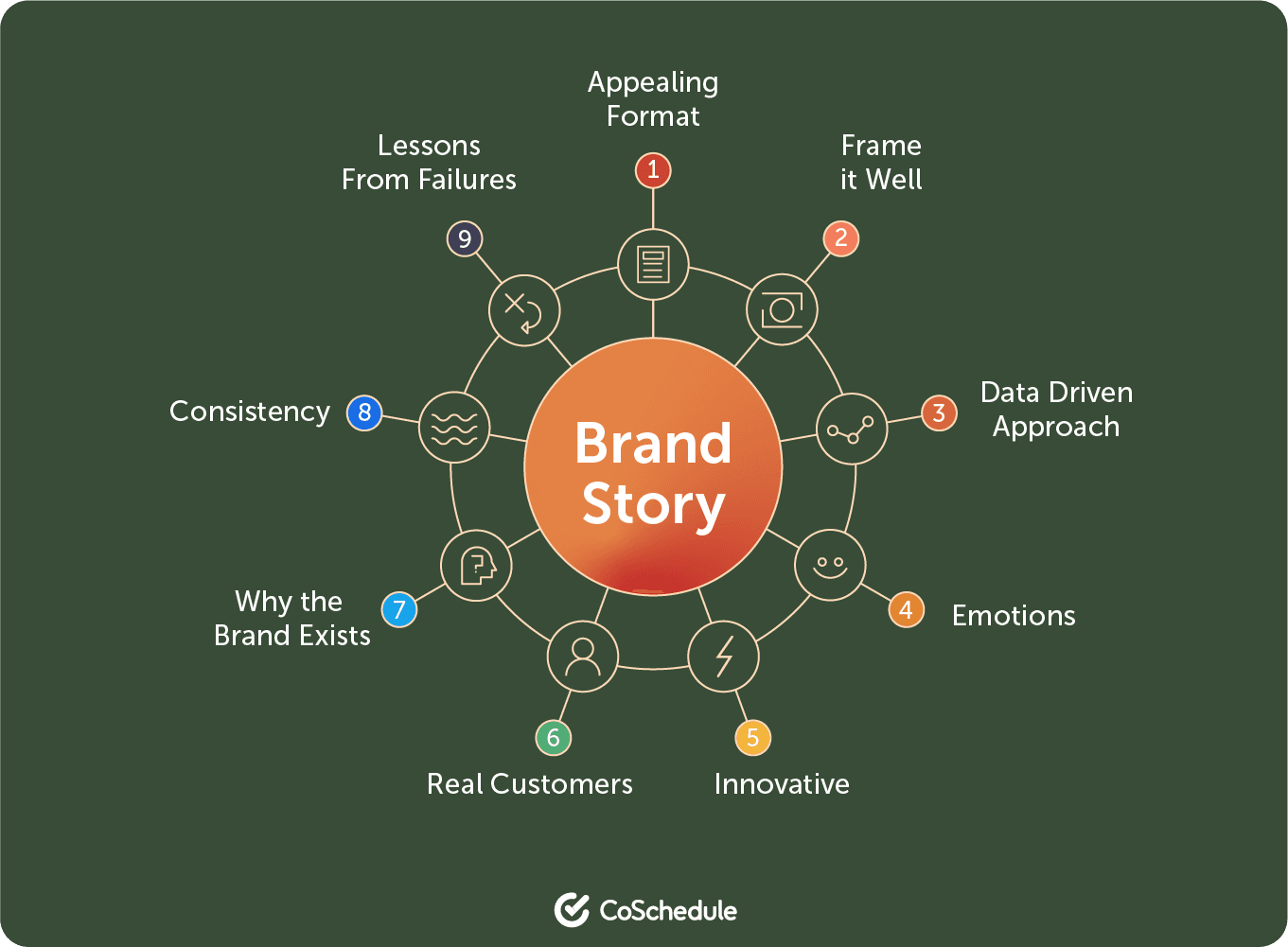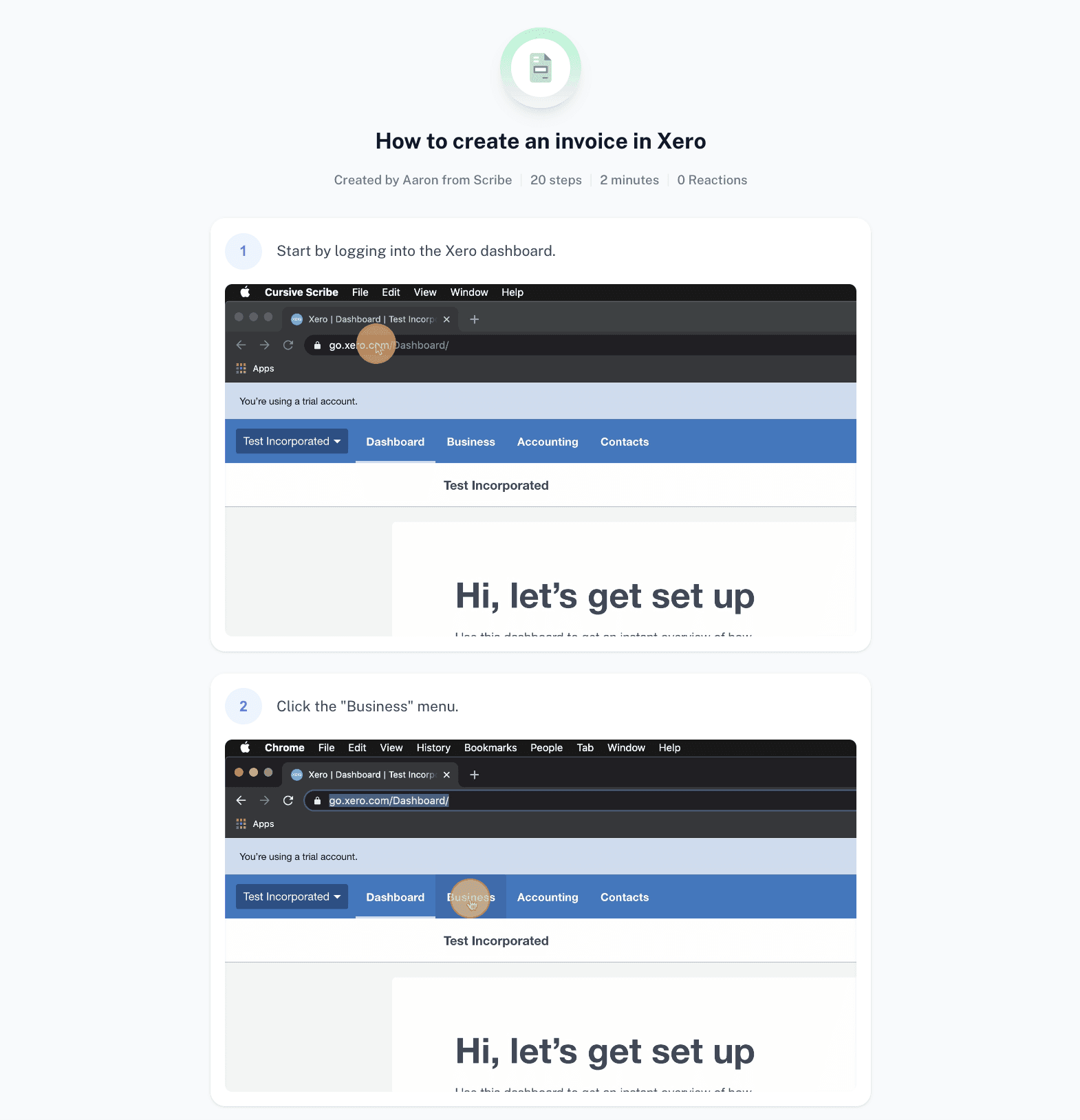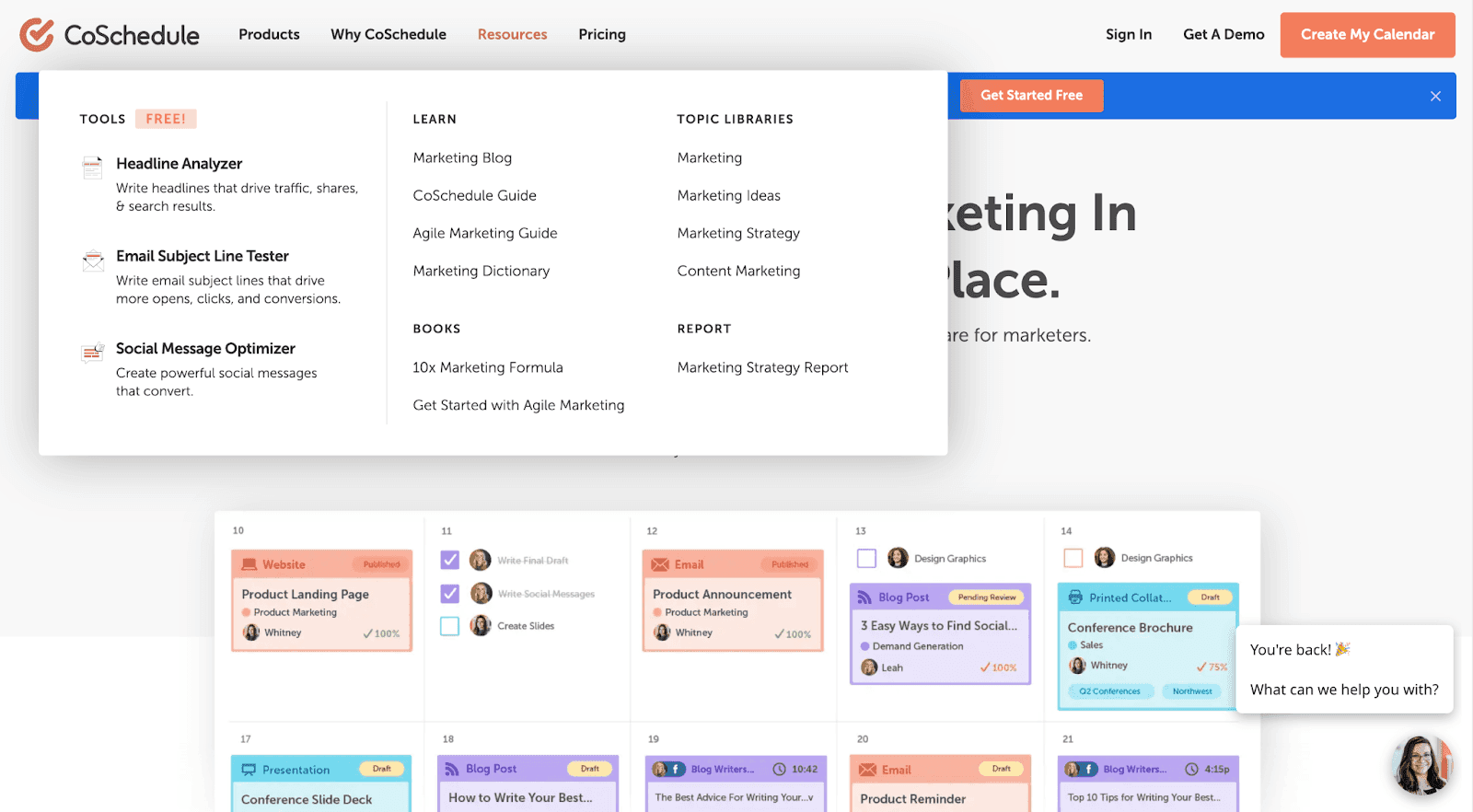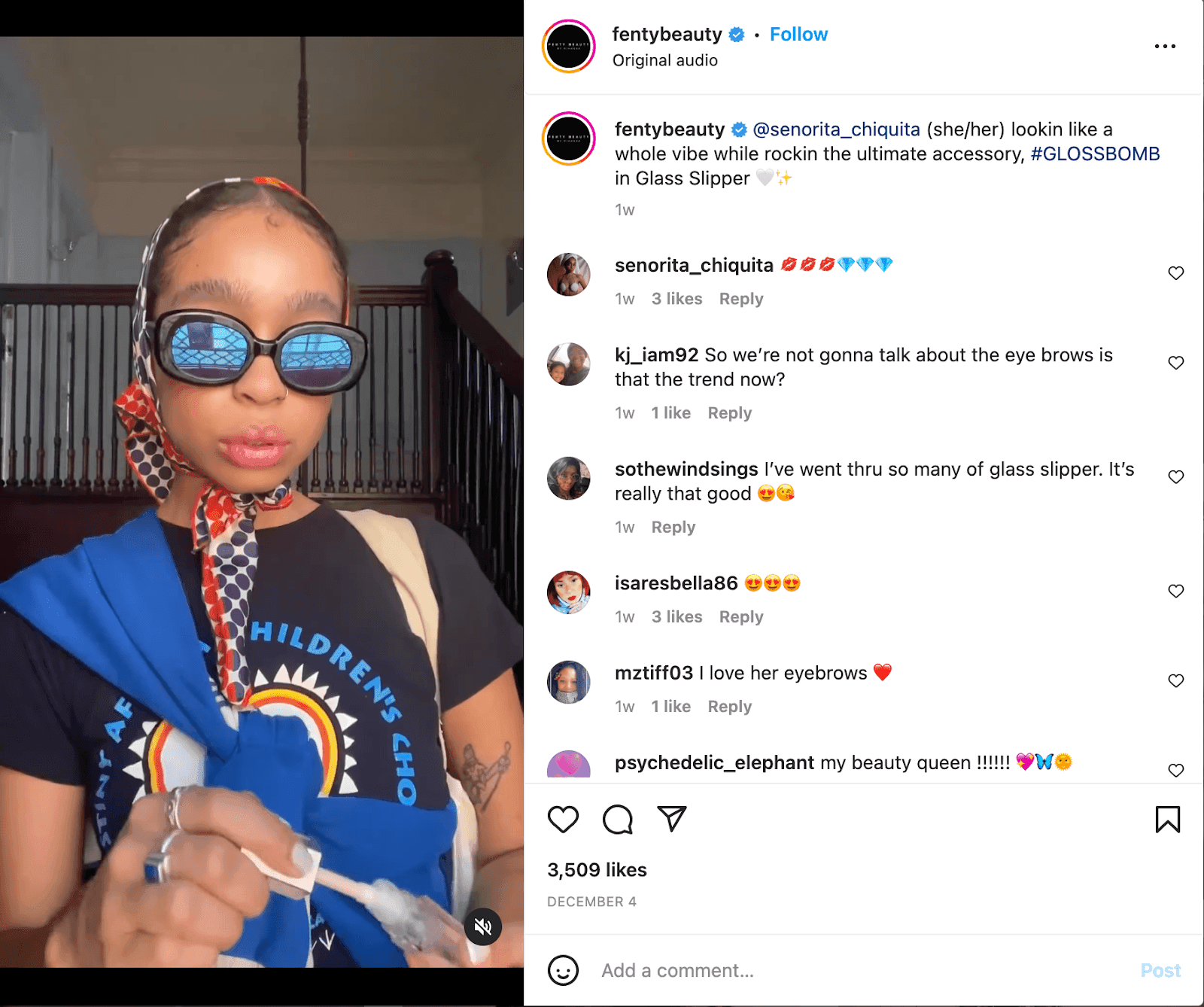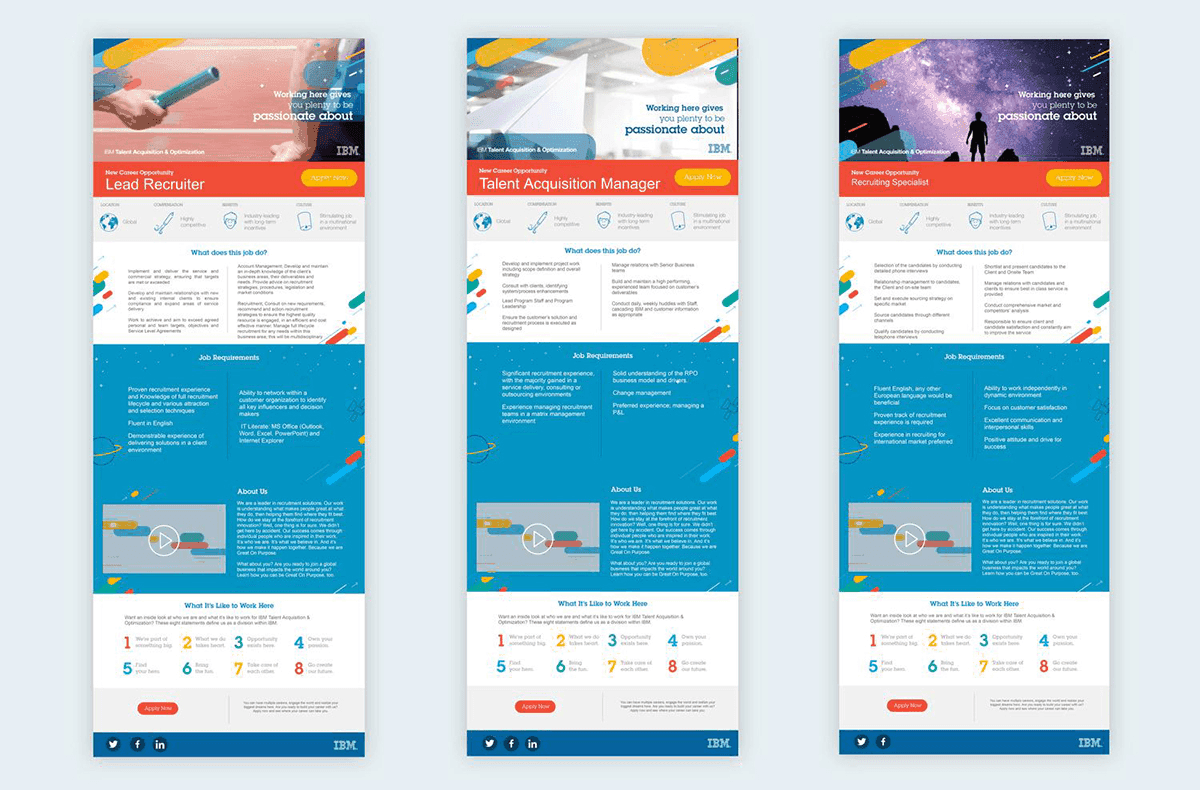One of the challenges we hear from you—our wonderful audience—is that coming up with ideas for new content can be super difficult. Trust me, we get it (and have been there ourselves).
Sometimes, it’s nice to have inspiration.
And so we’re going to fill you in on every type of content you can add to your marketing calendar and distribute to your audience to provide value and further your brand’s reputation.
Ready for some great new content marketing ideas? Yeah, I know you are—let’s do this.
What Is Content?
Content
Content encompasses all of the marketing assets, materials, and collateral marketers publish to influence profitable customer action. A piece of content is a single marketing project. Content may exist as a single unit, but content is often part of a marketing tactic that supports a holistic marketing strategy.
For example, a blog post is a piece of content.
If that blog post is part of a topic cluster around a keyword grouping, that blog post is part of a search engine optimization (SEO) marketing tactic as published through the marketing channel of a blog (that also happens to leverage a secondary marketing channel of search engines).
Because that topic cluster is one of many topic clusters, it is part of an SEO marketing strategy—a type of marketing strategy. The SEO marketing strategy is one component of a master marketing strategy that aligns all marketing activities with a holistic vision to actualize business goals.
What Are Content Types?
A single piece of content is the completed deliverable a marketing team publishes. There are many types of content. In this resource, we break them down as:
- Types of content media: These are the actual assets marketing teams publish, such as an email.
- Types of content formats: These are the general approaches for the asset, such as an email newsletter.
- Types of content angles: These are the directions or objectives for the asset, such as an email newsletter that shares best practices.
- Multi-content campaigns and platforms: These content concepts leverage multiple pieces of content, such as a webinar that leverages presentation decks, emails, and landing pages.
- Types of content publishing: These are general approaches for how you source and publish content, such as repurposing, republishing, and syndicating content.
- Types of learning style content: These are simply the different ways in learn people enjoy learning and retain information, such as learning through reading, visuals, and audio.
A content medium is the actual end-result asset in which a brand imparts its message to its audience. Types of content media are the documents and pieces marketers publish—agnostic of formats, angles, points of view, and purpose.
1. Articles
You likely have company news, product announcements, and a ton of other stories that deserve to be told. Like a traditional newspaper or magazine publishes articles, you can, too.
As Joe Pulizzi, the godfather of content marketing likes to say, companies are now publishers. So it’s perfectly acceptable for marketers to borrow ideas from the traditional publishing world to better engage their audiences.
2. Blog Posts
Blog content can take many different angles—how to, list, question, why, etc.—and usually serves to educate prospective customers. Blog posts are usually at least 1,500 words long and help your audience solve a problem on their own, empowering them to become amazing at what they do (and subsequently give them more reason to use the product or service you’re selling).
Studies have found those who blog regularly are most likely to reach their goals.
3. Web & Landing Pages
Think about traditional web page content. Some folks call this brochureware content—the kind that is slightly deeper in the funnel, existing to teach your prospects how your product or service solves their challenges.
This could also include e-commerce product pages and beyond.
According to compiled research from MarketingProfs, most folks are likely to research 13 pieces of content before making a purchase decision, which makes this type of content extremely powerful for influencing sales.
Landing pages help you share the benefits of your product, service, or even piece of content while optimizing your visitors to convert.
These may include testimonials, case studies, and stats to teach your prospects how they are missing out by not using what you’re marketing.
4. Books
Joe Pulizzi famously said, “a book is perhaps the ultimate piece of content marketing that can position you or your company as a leading expert in your industry.“
We couldn’t agree more.
Publishing books is a great way to engage with your audience and generate more business and press opportunities. And it doesn’t need too much hard work — your book can be a natural extension of your content marketing strategy.
Analyze your previous content (articles, white papers, videos, etc.) to identify which topics your audience members enjoy and want, and go deeper and expand those concepts in your book.
Psst: our CEO has published a book, too. Check out 10x Marketing Formula to learn more about creating effective content.
5. E-Books
E-books are an excellent way to break up long-form content into digestible chapters. An easy way to start an e-book is to select existing blog posts that flow logically together to repurpose your existing content.
6. Forms
Forms aren’t the first thing that pops into the mind when discussing content types, but they’re super helpful in capturing visitor info and generating leads. Contact forms, quote request forms, inquiry forms, service selection forms— you have tons of options to choose from.
7. Hello Bars
A hello bar or floating bar is a small banner that appears on the top or bottom of your website. You can use it for multiple purposes, including:
- Making an announcement
- Highlighting an exclusive offer
- Capturing lead details
- Directing visitors to a specific page or area on your site
- Cross-selling and up-selling
Think of it as the less intrusive version of a popup.
8. Popups
Speaking of popups, let’s talk about them. Have you ever seen a small window suddenly appear on your screen when opening/scrolling a web page? That’s a popup.
It can contain notifications, surveys, discount codes — or if you want something more interactive — spin-to-win wheels and countdown timers.
And that’s not even the best part. Popups are proven to drive traffic and convert more website visitors.
9. In-App Messages
If you manage an extranet (a website specifically dedicated to providing customer content gated behind a login) or a SaaS product, in-app messages work really well for reaching your users. Check out a tool like Intercom to get started.
10. Tools
CoSchedule launched Headline Analyzer Studio as a way to help our audience get more social shares, higher search rankings, and ultimately more traffic. We analyzed the data from the best content we’ve seen run through CoSchedule and made it available in an easy-to-use tool that ranks a headline’s ability to emotionally connect with readers.
That free tool has generated thousands of email subscribers, backlinks, and online mentions.
11. Browser Extensions
Enable users to make your product or service a part of their routine by creating a browser extension. You can also charge users a small fee to create an additional source of income.
12. WordPress Plugins
Several years ago, CoSchedule created the Click To Tweet plugin for WordPress. We gave it away for free and optimized the plugin’s landing page to gather email subscribers.
13. Mobile Applications
This can include gamification or utility. How can you provide value to your audience as they use their mobile devices like smartphones, tablets, and e-readers?
14. Calculators
Calculators are handy for helping your audience discover how much time/money/resources/etc. they could save by using your product or service.
15. Games
You’ve probably played the T-Rex dinosaur game when your internet was down. How about offering similar Chrome offline games to your visitors?
16. Worksheets
Worksheets are great for complementing blog posts that require following a process. They help your readers work through the ideas you’re teaching them on their own so they leave your website with something tangible.
At CoSchedule, we’ve found giving away free editable worksheets in Microsoft Word is extremely useful and immediately actionable.
17. Checklists
Checklists are great for helping your audience cross their Ts and dot their Is when implementing a process. They complement blog posts well that cover process and actionable step-by-step information.
18. Directory Listings
Create databases on topics (think: tools, software, and industry events) relevant to your target users. For example, G2 publishes detailed listings of different types of software, along with ratings, to help users choose the right tool for their needs.
19. Polls
Polls are simple one-question surveys with multiple choice answers. You can use tools already at your disposal like Twitter polls to gather feedback on content ideas and beyond.
20. Surveys
You can use surveys to gather data for original research, content ideas, product improvements, and a whole lot more. Surveys are a particularly helpful tool to help you get to know your audience better, and even build audience personas (if that’s your thing).
21. Quizzes
Quizzes can be entertaining and reinforce the education you’ve provided through content marketing. For example, in the latest Social Media Strategy course on the Actionable Marketing Institute, chapters are followed by quizzes which ensure students have the necessary information to move on from each lesson.
22. Social Media Posts
At this point, we know social media is important for a thriving business.
Hop on the bandwagon and create content specific to your social media channel to engage with potential and current customers. For instance, you can create stories and reels for Instagram and TikTok, while threads and chats make more sense for Twitter.
23. Emails
Create engaging emails with attention-grabbing subject lines to give subscribers the latest scoop on upcoming products and webinars, nudge them to take action, and more.
24. Direct Mail Letters
Direct mail letters, also known as envelope mailers, are old-school mail sent to prospects and customers. Add newsletters, gift slips, and redeemers to build a loyal customer base for your business.
25. Magazines
Content Marketing Institute publishes and distributes its Chief Content Officer magazine every other month. It’s a great way to connect with folks who want to disconnect from tech.
26. Brochures
Think small local businesses with physical offices. These print marketing materials are essential to leave in your customers’ hands as they walk out the door.
27. Flyers
Get creative with traditional flyers to capture your target audience’s attention during trade shows and events. Handbills, pamphlets, and digital flyers are three common types of flyers you can use to market your business.
28. Tear & Data Sheets
Develop a tear or data sheet succinctly summarizing product-related information, including its name, description, product number, and so on.
This type of content is supposed to be light, so keep it under two pages.
29. Manuals
User manuals are great for familiarizing customers with your product and maximizing functionality.
Use simple and straightforward language to explain product features. If possible, add supporting illustrations and screenshots so the user can visualize the text.
30. Catalogs
Catalogs contain critical purchasing information, such as product names, images, codes, descriptions, available quantities, etc. As the objective here is to categorize product information, it’s a valuable document for buyers, decision-makers, marketers, and sales reps.
31. White Papers
White papers often describe the benefits a prospective customer will get when they use a specific product or service from your business. These are most often used deeper in the funnel to encourage a prospect to make a purchase decision.
32. News & Press Releases
Something exciting happened at your business? The old school news release can still work for generating media coverage and customer attention.
33. Reports
If you’re thinking about conducting original research and using a survey to gather your data, research reports are a great incentive to give your survey takers. A research report compiles your findings in a single document (typically into a PDF).
34. Presentation Decks
Webinars, Meetups, conferences, and other speaking opportunities often require decks as visual aids. You can easily repurpose and distribute those presentations and speaking points with SlideShare. Afterward, you can then embed that SlideShare into blog posts.
35. Videos
According to research from HubSpot, video is the #1 most-wanted type of content. And 62% of video watchers consume the content thoroughly.
For marketing purposes, videos are great for showcasing culture/behind-the-scenes, product demos, service overviews, product ads, customer testimonials and case studies, fan shoutouts, team recruitment, event pre-promotion, entertainment, education, about us, and a whole lot more.
36. Images & Photography
Great content with poor design is still poor content. Sometimes, it is necessary for you to plan photo shoots to get your own custom photography and avoid stock.
Memes, animated GIFs, comics, cartoons, and even screenshots can all be valuable visual content.
37. Flowcharts & Diagrams
Research confirms people respond to visuals faster than words—more reason for you to create visual assets like flowcharts and diagrams to depict a process or system.
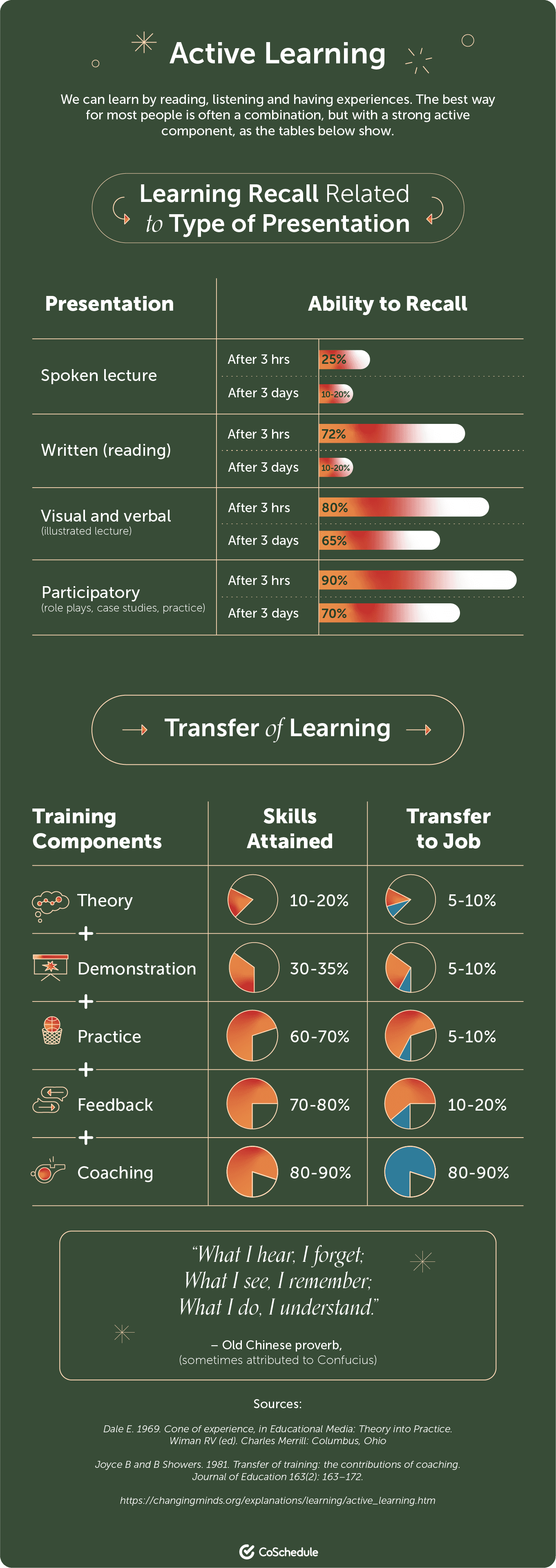
38. Infographics
Infographics deliver research in an easy-to-understand, visual layout. According to research from Demandsage, people like and share infographics 3x more than other types of content.
39. Desktop Backgrounds
Desktop backgrounds are another example of visual content. Create something branded, funny, or just aesthetically pleasing.
40. Posters
Posters help you effectively promote a product or service. Highlight your offering’s key features and benefits for current customers — or educate prospects about what sets it apart from competitors to drive brand awareness.
41. Billboards
Unlike other forms of advertising, billboards don’t require viewers to take any action to see ads. This means people who aren’t actively looking for products and services also become aware of your brand and offering.
Billboards are particularly useful when targeting a local audience. Placing in strategic locations will help create more interest in your advertised product.
42. Podcasts
Podcasts are an effective way to reach someone on the go, commuting, or while they shower. Seriously. According to research from Demandsage, 383.7 million people listen to podcasts.
Think of this content type like an educational or entertaining way to reach your audience through audio, distributed through outlets like Spotify, iTunes, and Google Play.
43. Audio Clips
Audio clips are a great way to engage with your audience, nurture relationships over time, and establish your business as a trusted authority.
Aside from podcasts, consider creating audio recordings and ads to educate listeners about your products and use cases. Don’t go too technical here — stick to top-of-funnel discussion topics.
A format is the appearance, plan, style, or type of an object (to loosely paraphrase the term from dictionary.com).
For marketing purposes, we define the types of content formats as a general approach to publishing content that may be shared across a variety of types of content media.
For example, an advertisement may take the medium of a video or social media post. Therefore, an advertisement is a type of content format.
44. Guides
Guides are arguably the most common content format that provides detailed information on a specific topic.
While the content should be comprehensive, the language must be digestible and easy to understand. Common examples include how-to blog posts, user manuals, and instructional videos.
45. Newsletters
Newsletters round up your recent content, content around a theme, or recent events happening/coming up at your business to deliver a ton of value to your audience in one piece of content.
E-newsletters are super popular these days, and email automation services like Salesforce Marketing Cloud can make it easy for you to put out consistent, quality email newsletters.
46. Advertisements
Magazine ads, newspaper ads, TV ads, pre-roll ads, and the like are traditional marketing tactics. The key to measurement here is to provide a way for your customers to tell you why/where they learned about your product or service.
47. Content Upgrades
These are gated content types, which are the valuable content you give away in exchange for an email address. You can use tools like LeadBoxes from LeadPages to embed a link into a piece of content that includes a form. All your visitors need to do is provide their email address and you’ll email them their free resource.
Valuable gated content is the best way to build your email list. Period.
48. Templates
Templates complement blog content that requires data punching very nicely. Alternatively, a few of the templates we’ve given away at CoSchedule include slide decks (for pitching new strategies to your team), Photoshop CC action (to automatically size every image to the perfect size for every social media network), and even spreadsheets (for managing project sprints and more).
49. Public Service Announcements (PSAs)
A few of years ago, a hospital in Fargo, North Dakota, recorded several PSAs and shared them through local radio stations. These were helpful tips on how to spot when folks were having a heart attack so you could save their lives, what to look for to understand if someone was having a stroke, and so on.
Those PSAs all made the hospital feel like they really cared about the citizens in our community, which was a fantastic way to build their brand image (especially given their larger competition).
50. Quotes
Quotes are motivational/inspirational/entertaining/educational quips, usually from influencers. They are a powerful way to increase engagement on social media or to prove points within larger content pieces.
For example, if I wanted to prove why marketers need editorial calendars to organize their work, I could turn to an influencer in the content marketing industry for a quote on the subject:

51. Testimonials
Testimonials are a form of quote, but come directly from your customer base about your product or service. These work wonders as social proof on your website landing pages where your goal is to convert new prospects.
For example, here at CoSchedule we have a dedicated customer stories page in which we share success stories and testimonials—these also make for great social media graphics.
52. Reviews
Similar to testimonials, reviews are detailed evaluations or assessments of a product, service, or experience. They’re usually packed with helpful information and insights to help readers make informed decisions.
Share reviews from external platforms like Yelp or Google with your potential customers to let them see how your business or service is perceived.
53. Lessons
People are always eager to learn. Create video, written, or audio lessons to educate customers on interesting and relevant topics, thereby while driving engagement and building an audience for your brand.
54. Case Studies
A case study shares a customer’s success story they experienced when using your product or service. These can take multiple different media types like videos, web pages, or blog posts, and are a robust testimonial that encourages prospective customers to consider your business as they look to resolve similar challenges.
A common formula for case studies covers what the problem was before implementing a change, how the customer changed, and what the results were after the change.
55. Brand Stories
Brand stories are generally told through different forms of content to communicate a brand’s values, mission, and identity to its target audience.
Consider highlighting your brand’s challenges and experiences and what you did to overcome them to become successful. You can also mention your products and services, and discuss how your customers can use them to achieve their goals.
56. Company News
Your business is ever-evolving, growing quickly to better serve your customers. Every improvement you make is a story worth sharing with your audience.
Company news often takes the form of press releases, articles, and email newsletters.
57. Product Announcements
Where company news addresses process improvements and culture stories, product announcements share what’s new with the actual service you sell.
For software companies like CoSchedule, these announcements are often covered in feature blog posts and go well beyond into Product Hunt, Inc.com, social media messages, and more.
58. Demos
A product demonstration may be just what your prospects need to make a purchase decision. Often, these are videos that blatantly show how to do something desirable with your product to an audience who already understands the benefits your solution provides.
59. Support & Onboarding
Support and onboarding materials include guides, video tutorials, SOPs, work instructions, and other resources you can create to provide your staff with detailed information and instructions regarding your company’s work environment and workflows.
Aside from employees, you can also create support and onboarding content for customers.
Share articles, videos, and other types of content to help them better understand your product’s value proposition and how to use it to achieve their goals.
60. Collaborations & Partnerships
Similar to guesting, this is when you work together with another person or business to co-create content. This way, you tap into external knowledge and skill sets to create great content all while reaching a larger audience.
Great collaboration examples include e-books, webinars, and free guides/templates.
61. Contests
Contests often take the form of “enter to win”. You can ask your audience to do something, show you what they’ve done, and they get the opportunity to receive something awesome.
62. Awards
When I worked as a marketer for an electrical distributor, we gave awards every year to our best suppliers and customers. It was a way for our business to recognize the collaborative efforts to grow together.
The angle of a piece of content is its direction and objective.
You may apply a single content angle to many types of content media. For example, a podcast, video, or blog post may take a “how to” content angle.
63. How To
This is the classic educational tactic where you literally teach a reader how to solve a problem. This method involves giving step-by-step, actionable advice your readers, watchers, or listeners follow as they solve a challenge by themselves (albeit, with your extremely helpful advice).
64. Lists
List content (like this page you’re reading) often provide ideas rather than education. Think of headlines like 10 Ways To Get More Traffic To Your Content where finding the ideas is often more important that learning the specifics of actually executing them.
65. Questions
The headline of your piece of content is a question. The body of your content is the answer. This type of content works particularly well for beginner content creators to establish a content foundation for your brand.
66. Why
Why content works well for explaining how things are. Think of headlines like Why You Don’t Need Approval (+5 Bonus *Unconventional* Lean Marketing Ideas).
This kid of content work well for opinions, rants, and personal stories, but also factual explanations.
67. New Methods
Several years ago, Brian Dean from Backlinko shared a process he coined to rank higher in search engines called the Skyscraper Technique. This is a new method, and is now a term many in the content marketing and SEO community reference regularly. By naming the process he shared, Brian gets a lot of credibility and backlinks to his original content.
68. Roundups
Ye olde roundup: Find the best content in your niche on a specific subject, then write a list linking to those resources. You can do roundups of the week, month, year, etc.
69. Compiled & Curated Research
Your audience likely has questions you can answer by curating data points into one comprehensive blog post.
For example, CoSchedule’s audience (that’s you!) consistently asked us about the best times to post on social media. We answered the question by compiling all of the different research studies we could find on the topic into a single blog post that provides the best times to post on every major social network. After that compiled research took off, we now conduct and publish our own original research on this topic.
70. Original & Proprietary Research
My friend, Andy Crestodina, does an original research study every year to understand the progress made in the blogging industry. By publishing this original research, he gains tons of backlinks because he finds answers to common questions his following asks.
You can do the same by writing a simple survey with a tool like SurveyMonkey and asking your followers to provide their insight.
71. Best Practices
Sometimes, there just isn’t data to back up what your audience needs to know. This is a perfect use case for best practice content.
You can use best practice blog posts to share step-by-step processes, theory-driven anecdotes, and more. Just be transparent when you suggest the best practice is your opinion and/or industry-wide accepted.
72. Transparency
Buffer does a great job of sharing transparent content, and have an entire page on their site dedicated to sharing their company culture and how they run their workplace.
Transparent content shares your process behind the scenes (similar to How I… content). Additionally, it can go even deeper, like sharing the entire company’s salaries, as Buffer does with its Transparency blog.
It’s a great way to build trust with your audience. And as we marketers know, people buy from people they know, like, and trust.
73. Opinions
Like traditional newspapers often have Opinion sections for articles not backed by data, but rather, by anecdotes, you can also share your thoughts and rants on your blog to inspire engagement.
Controversial content makes your readers question a behavior, belief, or sense of belonging. Tying that into your content titles practically begs for engagement.
74. How I
These are often personal success stories that help your audience solve their own problems.
For example, when we launched our Marketing Strategy e-course at CoSchedule, I found out that many of you want to increase your email subscribers and traffic. With this knowledge I could share the tactics I’ve personally used to help increase our subscribers and traffic at CoSchedule in a How I… content with a title like: How I Increased Blog Traffic From 40k Pageviews Per Month To 1M+ In Less Than 2 Years.
It’s kinda like a case study that shares your process.
75. Product Reviews
Have you come across a product or book recently you know your audience would love? Write a review as a piece of content.
At CoSchedule, we actually reward this behavior from our users by offering them a discount when they publish and share their reviews. It helps us encourage user-generated content that helps CoSchedule reach a larger audience.
76. Culture
Culture content shares the philosophy behind the scenes at your business. What stories could you share that make your culture unique? Those ideas can inspire thought leadership within your industry; you just need to share them!
77. Metaphors
Have you ever seen a new piece of content but felt like you’ve already read it a dozen times? Adding a new metaphor (angle) can add a lot of flair to an overdone topic.
78. Predictions
Have data to prove something big is going to happen in your industry? What about an opinion of what is bound to influence your industry next year? This type of content sparks conversation, and definitely exemplifies thought leadership for your niche.
79. Failures
Learning what not to do is often as important as learning what to do. Sharing your mistakes to help others avoid making them not only shows your humanity, but can be extremely helpful for your audience.
80. Product Comparisons & Alternatives
Are there competing products in your niche? Chances are, your audience may appreciate your professional experience on which option is best.
For example, sites like GetApp have a ton of comparisons for competing software companies, making it easy for consumers to make the decision of which option is best for them.
81. Subject Matter Expert Interviews
Interview content is similar to Q&A where a host questions a guest. Interview formats work well for podcasts, videos, and even blog post content.
The process is usually really simple for both host + guest, which makes it a great form of collaborative content. Plus, as a host, you give your audience access to new insights while also dipping into your guest’s audience pool.
82. Q&A/Ask Me Anything (AMA)
Questions and answers have always been an effective form of content. Simply ask your audience what questions they have that they’d like your advice on solving, then create content that provides the answer.
A similar format is the ever-increasing-in-popularity Ask Me Anything, that takes place on platforms like reddit and other up-vote communities. With this format, you literally dedicate time as an event to allow folks to ask questions which you answer live.
83. Launches
Generate the right buzz before launching your product.
Create teaser videos and images that provide a sneak peek of the upcoming launch. Or write articles and blog posts providing more background information and explaining why it’s unique and valuable.
Other forms of visual content, like videos and infographics, are also useful for encouraging potential customers to sign up for updates or notifications about the launch.
84. Promotions
Special promotions can cover a lot in the marketing world. An idea here is to plan a promotion around an industry event, holiday, season, or other timely events.
For example, online stores and software as a service (SaaS) companies often plan promotional sales events around Black Friday and Cyber Monday.
The following content concepts often leverage multiple pieces of content as a campaign or platform.
For example, a course is not limited to one piece of content, but leverages multiple such as written lessons, visual videos, experiential worksheets, and interactive quizzes.
85. Pitch Packets
I went to a conference recently and listened to a PR/marketer talk about a sunflower butter client of hers. They pulled together recipes, supplies, and bottles of the sunflower butter to influential food bloggers.
So what happened? They got lots of publicity from food bloggers with their own spins on the recipes, along with lots of new recipes for the sunflower butter brand. Very nice!
86. Swag
At CoSchedule, we have three different swag packets we ship to awesome customers, fans, and folks who help us out. The kits include t-shirts, posters, stickers, hand-written thank you letters, and more.
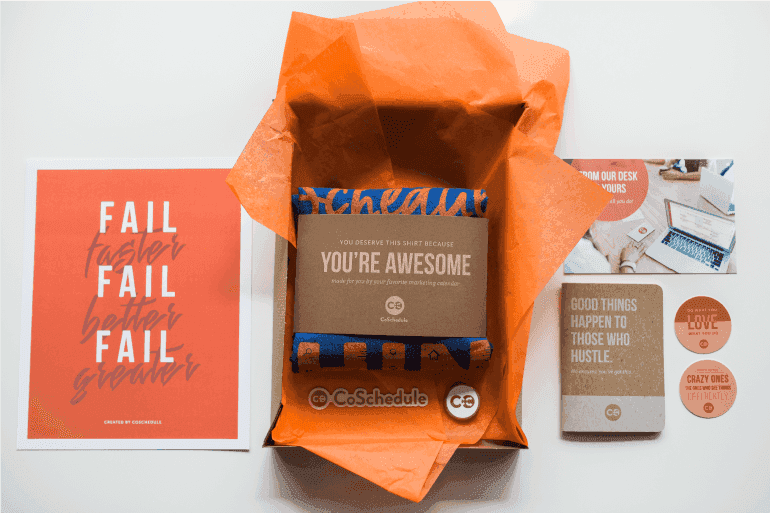
87. Live Streams
Events make for amazing live streaming opportunities, particularly for those who just couldn’t be physically present. Think conferences here.
Facebook Live also gives you the opportunity to informally engage with your audience with video.
88. Workshops
Workshops work particularly well in tandem with courses and conferences. These are breakout sessions to teach something a little more in-depth than what you’d get with surface-level understanding from a standard session.
Instead of a speaker, think of yourself (as the host) like a teacher. Interaction like a classroom is expected among students and teachers, even when your workshop is digital with a tool like Zoom.
89. Conferences
These can be in person or virtual summits. Think speakers, presentations, and training sessions + exhibit halls.
90. Meetups
Is a conference just a bit too much? You can go more informal and local with Meetups.
For example, Full Stack Fargo is a software engineering and startup community in our local area. Anyone from the Fargo, North Dakota community can join in to see local entrepreneurs present on a variety of topics within the software and startup space. It’s a great way to meet people in your community who are passionate about the same things you are.
91. Webinars
Webinars are kind of like a class you teach your audience as an event. You select a specific time and day, promote the event to your audience, and host the webinar usually with a deck and speaking points. Afterward, you may publish recording videos and embed this visual content into additional media such as blog posts and share it in emails.
92. Courses
Here at CoSchedule, we offer Actionable Marketing Institute, which offers a collection of marketing courses designed to prepare marketers for industry trends and provide them with essential skills to help get their marketing operations off the ground. We offer a few free courses, along with a paid collection of all courses with downloadable templates, complimentary videos, quizzes, certifications, and much more.
Another method for implementing an e-course could be as simple as setting up marketing automation with your email service provider. Upon signing up for a specific email list, you could email each lesson to your students.
93. Certifications
Here at CoSchedule, we offer a few certifications within our Actionable Marketing Institute courses. Our Social Media Strategy Certification is especially popular for those marketers trying to add new skills to their resume.
You know what offering a certification does? People list that they are certified everywhere on their social media profiles which causes their peers to look to us for the same education. Offering certifications like this is a smart content play to draw in the right kind of following.
94. Challenges
NaNoWriMo is National Novel Writing Month and takes place every November. It’s a challenge to write a novel in one month. The community challenges themselves to track progress, write thousands of words every day, and gives participants the opportunity to network, get pep talks, and meet peers online and in person.
What if your business could do something like that for your industry?
95. Websites
A website is a no-brainer to display your content in the most effective way possible while ensuring easy accessibility. You can have separate sections for content, including products, blogs, case studies, demos, or other resources.
If you open CoSchedule’s website, you’ll find links to different types of content. We’ve further split the content into various categories to help visitors find what they want faster.
96. Microsites
Have a bit more information to share than what a simple web page can’t quite do? Microsites work well for communicating the story around a particular campaign.
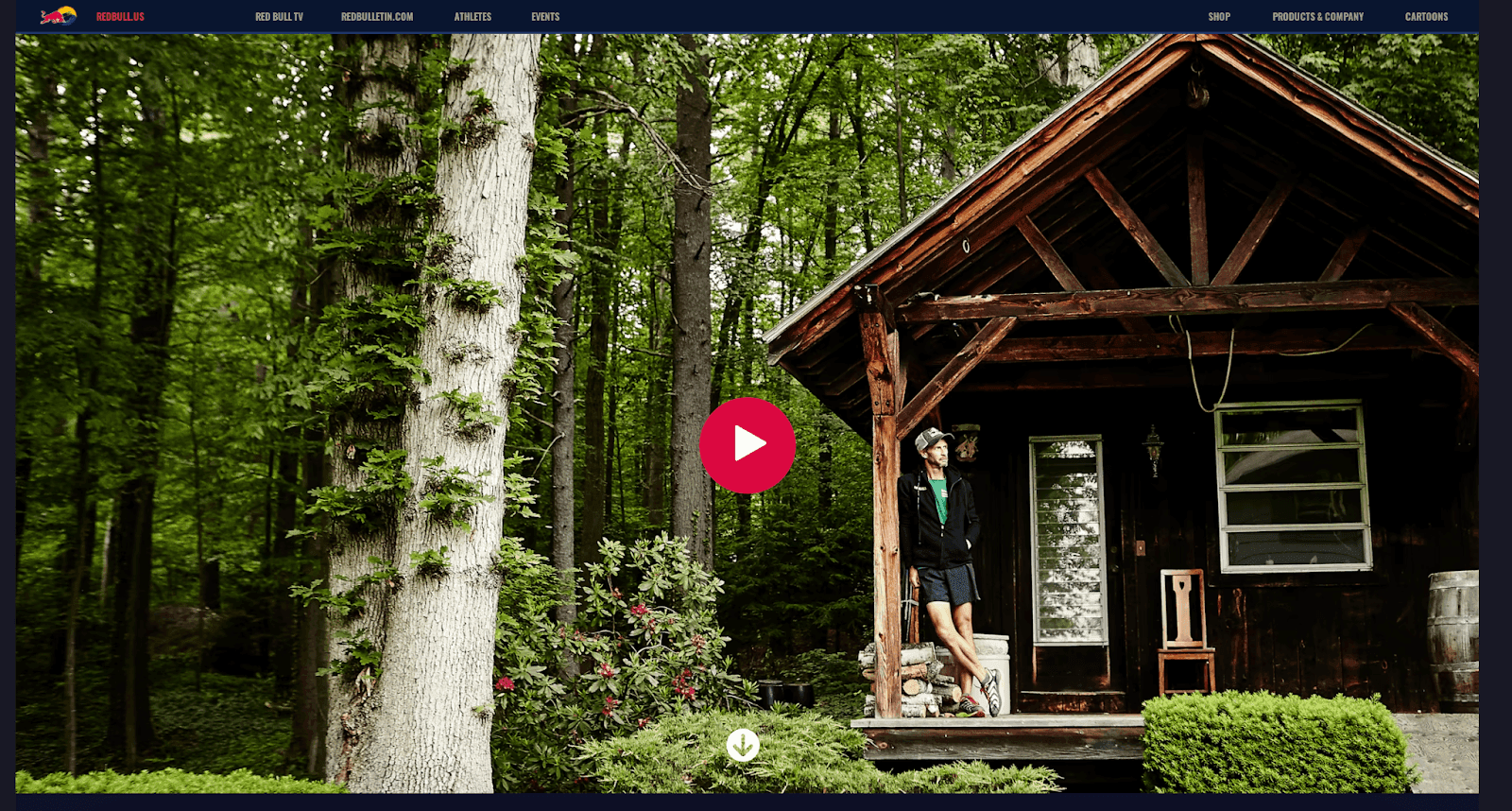
This microsite from Red Bull retraces Karl Metzer’s steps as he walked the Appalachian Trail in record time, highlighting the brand’s bold campaign.
97. Forums
Hosting your own forum gives your audience a way to ask questions and field answers from their peers. This type of content builds a community around your brand, empowering user-generated content.
98. Wikis & Dictionaries
You’ve probably visited Wikipedia a few times by this point… which is largely made from user-generated content + editing and policing. Like forums, Wikis give your audience the opportunity to share knowledge among their peers while positioning your brand as the go-to source for that kind of niche information.
A similar concept is creating an industry-specific dictionary, something we’ve done here at CoSchedule. By filling this dictionary with commonly searched marketing terms, we are able to position ourselves as marketing thought leaders and drive more traffic to other content.
99. Knowledge Bases
Having internal and external knowledge bases for your team and customers is a great marketing idea. Compiling useful information and resources enables the reader to learn about a specific topic or troubleshoot problems — all on their own.
With customers preferring knowledge bases over other self-service channels, adding a knowledge base also improves customer satisfaction.
The following types of content revolve around how you source and publish content marketing. These are general content publishing approaches.
100. Guest Content
“Guesting”, in marketing terminology, is when you accept, publish, and share guest-created content. A common form of this is guest blogging, though you could embellish upon guesting well-beyond your blog.
At CoSchedule, we have found that guest blogging is a great way to fill our editorial calendar year-round, and helps take some of the load off our team while keeping our blog feed full of quality content.
101. Sponsored Content
This is when you pay a publication to place a piece of content you’ve created. Also called native advertising, sponsored content is popular with magazine-esque publications, but you’ll also see many successful blogs placing guest blog posts as sponsored content.
102. Curated Content
Curated content involves sourcing content from various sources, like other websites, blogs, social media platforms, and similar channels.
Be forewarned; curating content sounds deceptively easy. A lot needs to be done.
You have to select relevant and valuable information based on your intended audience and then present it in an appropriate format. News digests, round-up articles, and resource or tool collections are common examples of curated content.
103. User-Generated Content
User-generated content or UGC is any type of content — images, videos, social media posts, discussions, or blogs — that comes straight from your customer. Use it to build social proof and increase customer engagement and participation.
104. Republished Content
Do you have old content that would be even better if you updated and optimized it a little? Take the time to improve and modernize that content and publish it as if it were a brand new piece of content.
This process not only saves time (you don’t have to create a new piece from scratch), but can help improve your rankings in search engines, increase the email subscribers you receive from that content, and boost your traffic, too.
105. Repurposed Content
What do you get by modifying or adapting existing content in a different format or for a different audience?
Boom! Brand-new content.
For example, if you have a video created for a general audience, you can repurpose it as a podcast. Similarly, a long-form blog can be repurposed as social media posts.
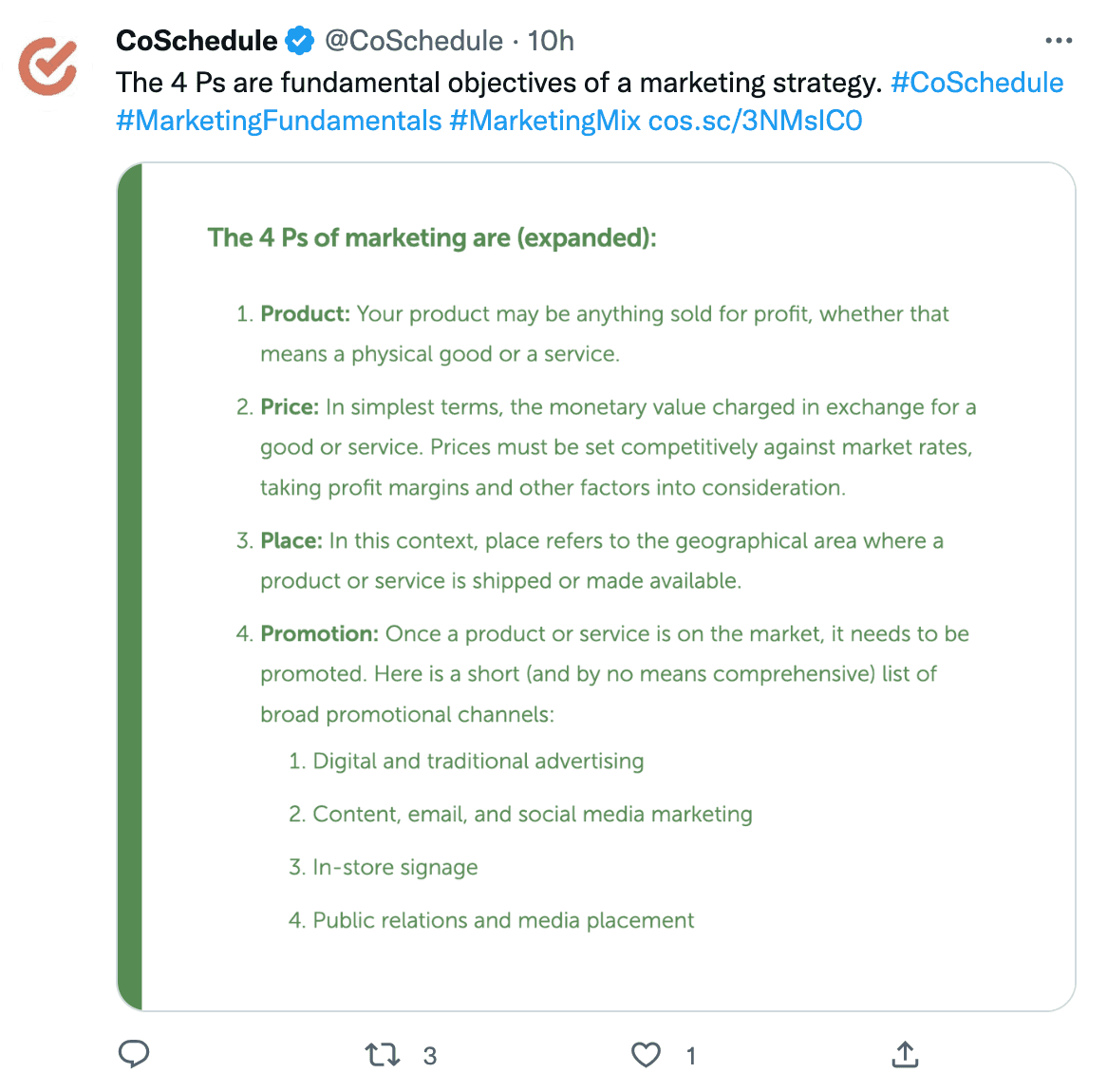
At CoSchedule, we use this technique A LOT. We frequently repurpose our blogs as YouTube videos or social media posts.
106. Syndicated Content
This is when you literally take an article from your website and publish it somewhere else. It can be an effective way to increase your exposure, like how Buffer syndicated their blog content to popular publications like Fast Company and The Next Web.
The Original Blog Post:
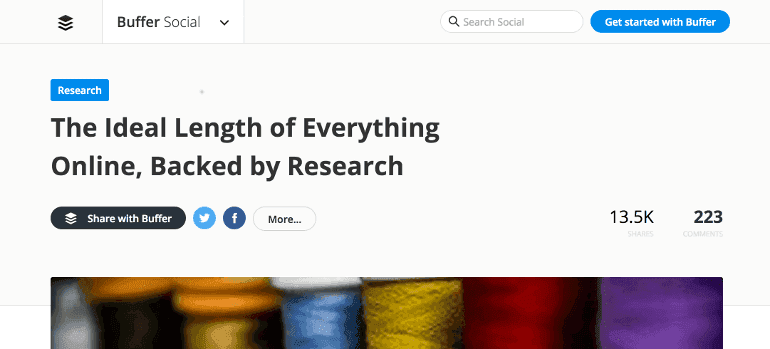
Syndicated Blog Post:
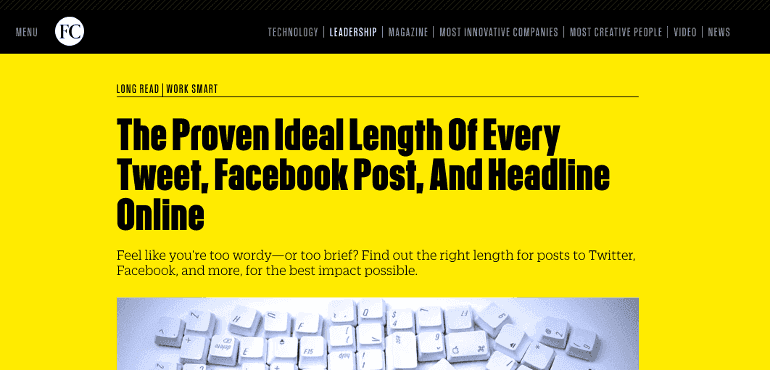
Content marketing provides value to a target audience through education and entertainment. As such, there are many different learning styles you may take into consideration—especially for educational purposes—to teach people of all learning styles.
107. Written Content
Any text-based content published online or in print comes under this bracket.
Use it to share information about your products and services with your target audience. The fact that you reach a large audience cost-effectively and can build trust and credibility are other solid advantages.
108. Audio Content
While podcasting is popular, there’s also a lot of opportunity to turn the written word into audio content.
With easy-to-use tools like Audacity, you can record yourself reading your e-books, blog posts, and course lessons out loud, host the audio on a service like Libsyn, and embed the audio files in your content with podcast plugins like fusebox, the Smart Podcast Player from Pat Flynn.
109. Visual Content
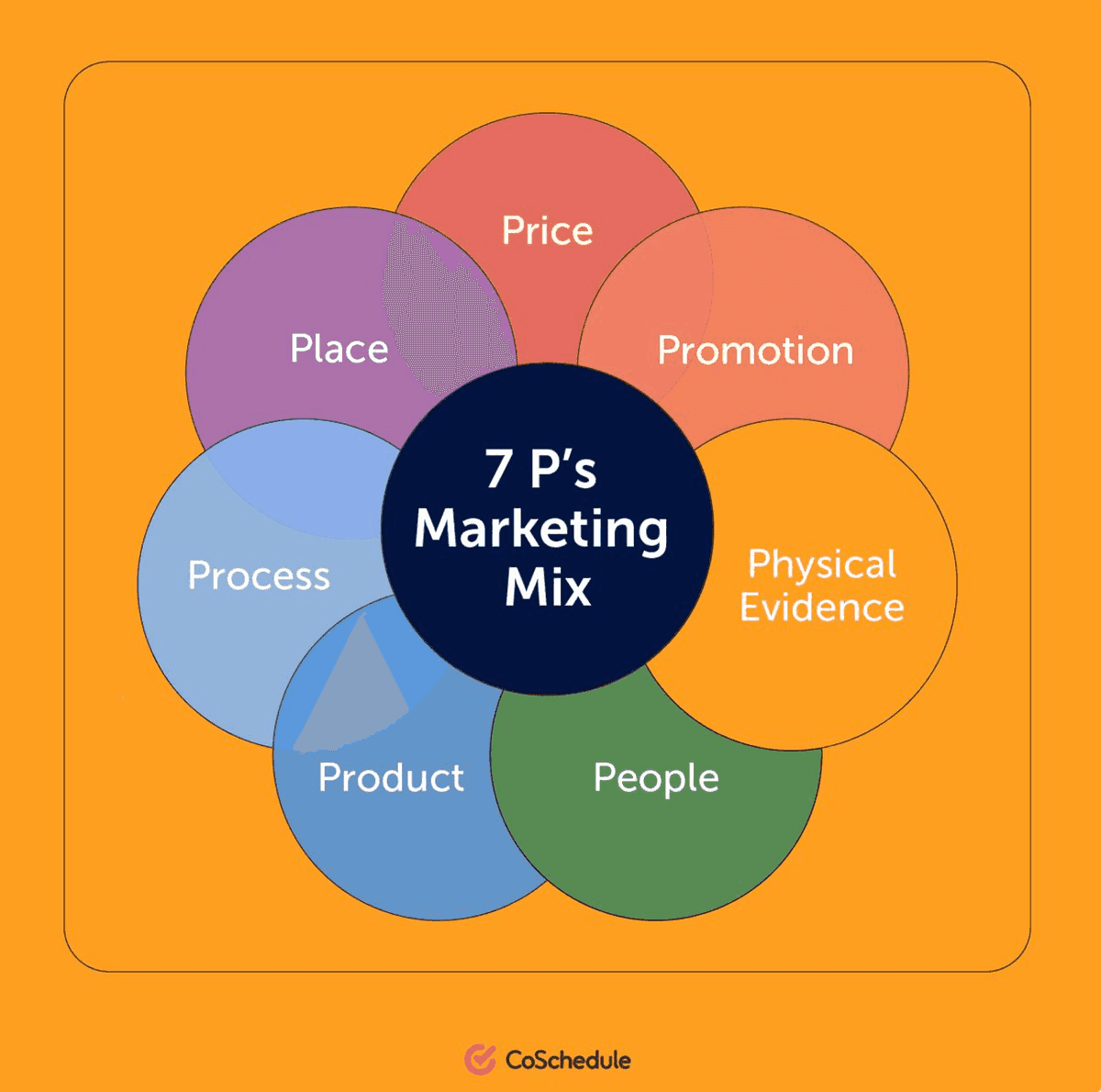
Visual content is the exact opposite of written content — and it’s gaining massive popularity.
Consider the following stats:
- 70% of companies are investing in creating more visual content
- 51% of marketers said nearly all of their published content has some form of visuals
- Marketers are ready to allot 21%-30% of their budget to visual content
Enough motivation for you to start creating visuals for your brand?
According to research by Visme, visuals increase learning and information retention by 78%.
110. Interactive Content
Interactive content is any digital content requiring the user to take action. Quizzes, polls, surveys, and games are some of the easiest and most effective ways to make your content more exciting and engaging.
111. Virtual Reality Content
Virtual reality (VR) content leverages VR technology to deliver customers immersive and interactive learning experiences. It creates unique ways for users to explore and experiment with virtual environments that would otherwise be difficult to replicate in the real world.
You can also use VR content to enhance your organization’s virtual training environment and provide employees with a flexible, more convenient way to learn.
112. Experiential Content
For this type of content, you use a combination of interactions, animations, storytelling, and embedded media to create an immersive experience for your audience.
When appropriately executed, experiential content can be a crucial differentiator for your business. Tools like Visme are great for building different types of experiential content, such as interactive infographics, blog post visuals, and video and motion graphics.
113. Engagement Content
Any content that engages and interacts with users comes under this bracket.
As you would expect, it’s a broad content category comprising a mix of case studies, memes, reviews, guides, and videos, among other formats.
This piece was originally published as a blog post and repurposed into this knowledge base page on December 1, 2021. It was significantly updated and republished in February 2023.
